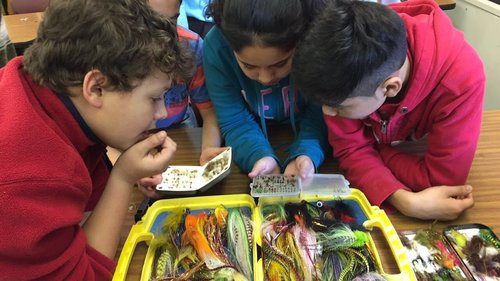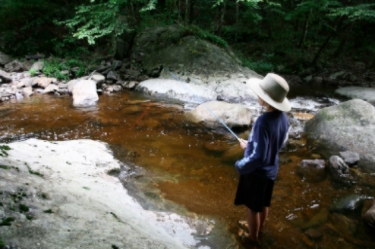

Getting Ready for the Stream with the NFSP
As part of our enriching programs in Grayson County Public Schools, BRDC provided a week of fly fishing lessons to the ninth grade girls and boys PE classes.

Learning about Amphibians & Aquatic Insects
BRDC has been busy with education programs, working with Galax Middle School, Fries School, Fairview Elementary, Grayson Highlands, Independence Elementary.
Grayson County's fourth grade students participated in the Natural Heritage Program with an emphasis on salamanders, toads, and frogs. Students learned about salamanders commonly found in the Blue Ridge.

BRDC receives VDGIF eStore Grant!
Thanks to the Virginia Department of Game and Inland Fisheries and the Wildlife Foundation of Virginia for supporting the Blue Ridge Discovery Center's efforts to connect our youth to the outdoors!

Impromtu Fly Fishing Camp!
At the request of a couple of campers from a previous camp we put together another Fly Fishing Camp to end the summer. Shortened by a day, it became an action packed three day initiation by fire. On the ride to camp we all agreed to treat this as an intensive course rather than the typical shenanigans of a summer camp. The result was one seriously focused group of kids.

Galax Enrichment Week - Aquatic Adventures
Despite the LOW pressure system hanging over the area bringing inches of rain, the students enthusiasm remained HIGH. They spent the week away from campus at Dannelly Park enjoying Aquatic Adventures.